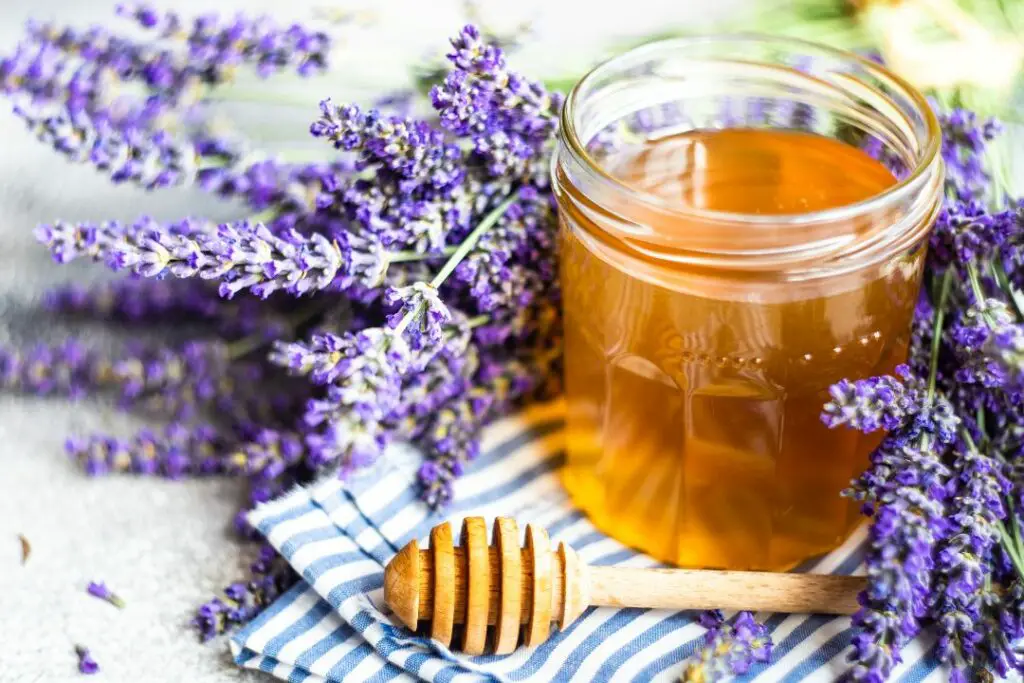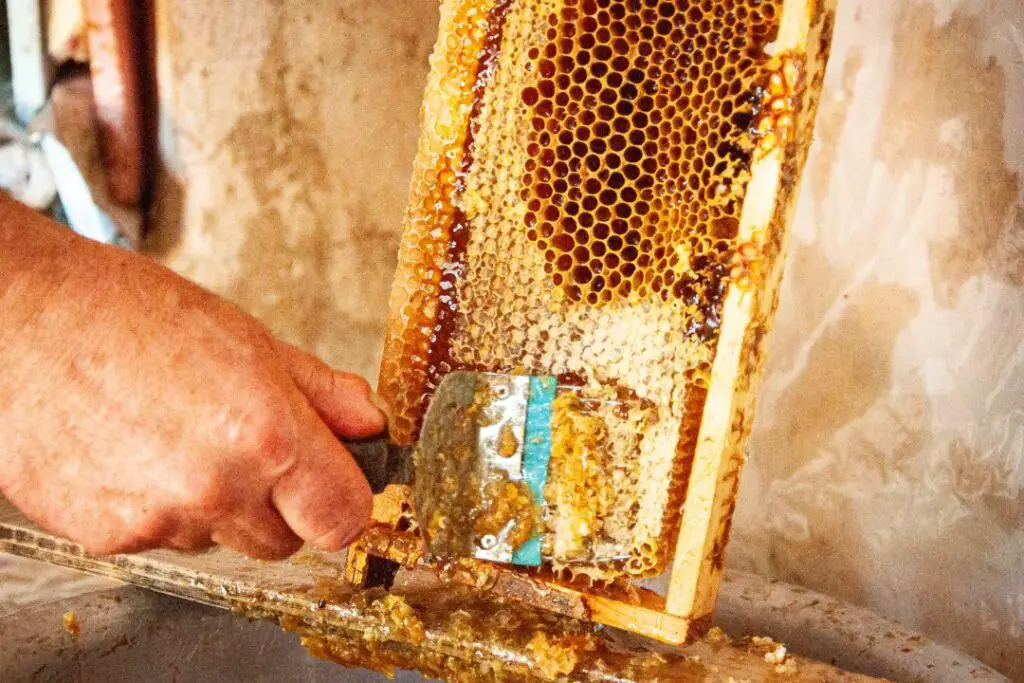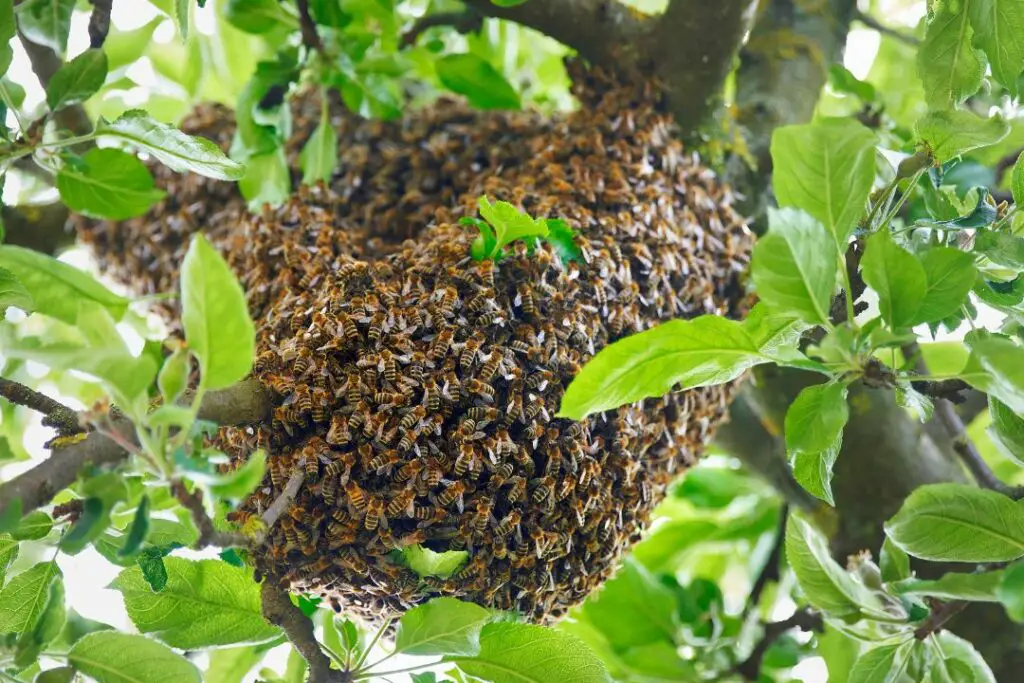Last updated on September 21st, 2023 at 11:28 am
Yes, a beekeeper will likely get stung while caring for their bees, and it’s not just reserved for beginners; even seasoned beekeepers get stung occasionally.
But this shouldn’t put you off beekeeping; it’s a beautiful hobby that can do wonders for your local flora.
So, let’s jump into the hive to find out why beekeepers get stung and how to avoid it while keeping your bees happy.
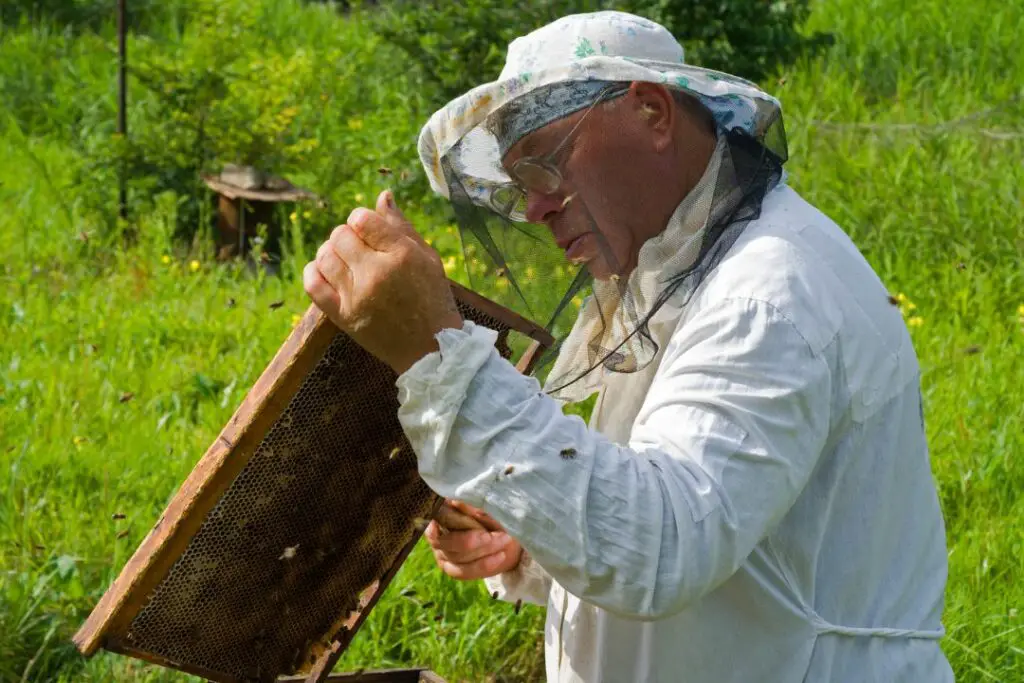
Why Do Beekeepers Get Stung?
As you delve into the world of honey bees and honey, you might wonder how those dedicated beekeepers don’t sometimes end up with a sting or two.
But now we know they are getting stung; let’s try and understand why.
Protective Instincts
Bees are, by nature, protective of their home. The hive is their sanctuary for raising their young and storing food.
Technically, beekeepers intrude into this private space while extracting honey or inspecting the hive. Some bees might see this as a potential threat and sting if they feel threatened.
Accidental Squishing
While beekeepers handle bees with utmost care, accidents happen. A bee might get trapped between a beekeeper’s fingers, clothing, or even the frames within the hive.
A trapped or squished bee can sting out of sheer panic or defence.
Pheromones in the Air
When a worker bee stings, it releases an alarm pheromone that signals danger to other bees.
This scent marks the ‘threat’ and can rile up other bees in the vicinity, making them more aggressive and increasing the likelihood of additional stings.
Bee Behavior and Environment
External factors, like weather or disturbances near the hive, can affect bee temperament. Bees tend to be more aggressive on windy, stormy, or extremely hot days.
Additionally, if the hive has recently been disturbed by predators or other external threats, the bees might be on high alert and more prone to stinging.
Different Species & Genetics
Some bee species or strains are naturally more aggressive than others. While many beekeepers choose gentler breeds for honey production, there’s always some variation in behaviour among bees.
While bee stings might seem like a downside, they’re a testament to the bee’s incredible commitment to protecting their community. And for beekeepers, it’s a small price to pay for the joy and rewards of working with these amazing creatures.
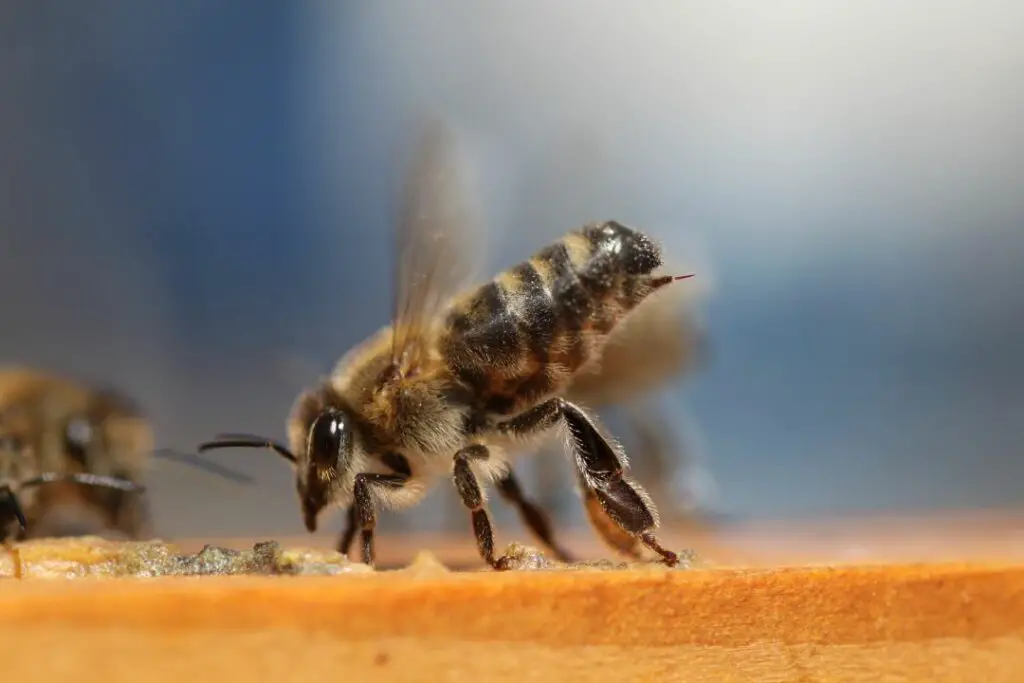
Does A Bee Sting Hurt?
Yes, a bee sting comes with a sharp, burning pain followed by swelling and itching for one to two hours afterwards.
This isn’t true for everyone, though. Some people can have an allergic reaction to bee stings, which need immediate medical attention.
These people can go into anaphylactic shock, causing raised, itchy skin and swelling that can restrict your airway if left untreated.
For most of us, getting stung by a bee will be mildly unpleasant but won’t cause any lasting pain or damage.
How Do Beekeepers Avoid Getting Stung?
Even though we’ve established bee stings aren’t incredibly painful, it won’t make caring for your bees enjoyable.
So, if you’re a beekeeper, what are some things you can do to avoid stung next time you inspect your hives?
Bee suit
Beekeepers use a range of protective clothing to minimise the risks of unwanted stings. The most common is the full-body beekeeping suit equipped with gloves and a veil to protect your face.
The suit is made of thick, tightly woven fabric, which acts as a barrier against bee stingers. The thickness of the material prevents most stingers from reaching the skin.
Its light colour is intentionally chosen since bees tend to be less aggressive towards lighter hues than dark ones, which they associate with predators like bears.
Beekeepers can also opt to use other protective gear like a beekeeping jacket. Still, it leaves you open to being stung on your legs, especially wearing thin or tightly fitted trousers.
Bee smoker
Smokers can help keep the thousands of bees in your hive calmer during inspections and honey extraction.
The basic principle behind a bee smoker is to produce cool, white smoke that’s gently introduced into the hive.
The smoke interferes with the bees’ ability to smell and, more importantly, their ability to detect alarm pheromones.
By masking these signals, the smoker keeps the hive calmer, meaning you have less chance of being stung.
Staying calm
Staying calm and collected when handling your bees is a must if you want to avoid unnecessary stings.
Let the bees land on you, and don’t swat or make any quick movements. Bees sting when they feel threatened, and your movements may be seen as a form of attack.
Weather
Bee’s temperament can be affected by the weather. Bees are more likely to sting their keeper during windy, wet or cold conditions.
This one’s good news because it means your inspections can be done on warm, sunny days, making for a much more pleasant experience.
Clothes and perfume
Another great way to avoid being stung is not wearing bright colours around your bees. Bees associate bright colours with nectar and pollen and will likely land on you in search of resources.
The same is true of floral perfumes that bees can mistake for flowers, leading to unnecessary attention. Having a bee land on you isn’t a problem, but it does increase the chances of an accident and an unintended sting.
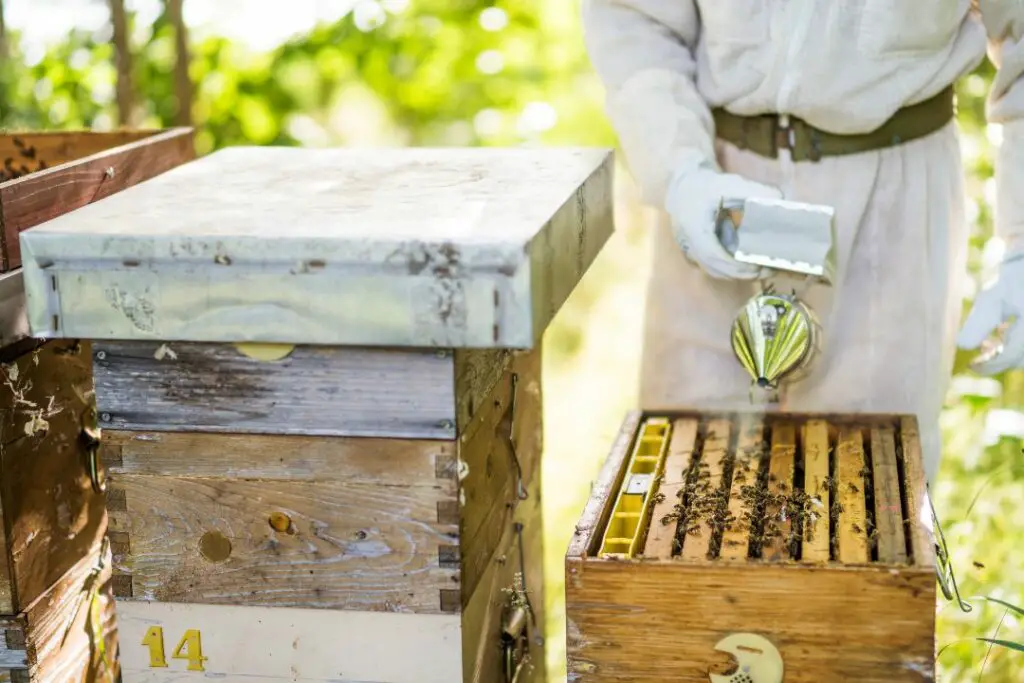
Why Do Some Beekeepers Choose Not To Wear Protective Clothing?
Some individuals who keep bees skip the protection and use the natural approach. While this may be an option for experienced keepers with very docile colonies, it’s not recommended.
But why does this appeal?
- Familiarity: Experienced keepers develop a deep understanding of bee behaviour. They can read the mood of the hive and, over time, feel confident enough to interact with bees without provoking aggression.
- Tactile Sensitivity: Beekeepers can handle bees and hive components with greater dexterity without gloves. They can easily touch the bees without squishing them and manipulate hive tools and frames.
- Temperature: Protective clothing can be hot and cumbersome, especially in warm climates or during summer months.
- Trust: Some beekeepers believe that working without protective gear helps establish trust between them and their bees. They feel that bees can sense the beekeeper’s intentions and respond calmly if approached gently.
- Natural Consequences: The risk of getting stung without protective gear is feedback for the beekeeper. If they make an error in handling or upset the bees, a sting is an immediate consequence, teaching them to refine their techniques.
- Economic Reasons: High-quality beekeeping suits can be expensive. Some small-scale or hobbyist beekeepers might save money by not investing in full protective gear, especially if they’re comfortable working around bees.
Whatever the reason, it’s important to note that Handling bees without getting stung requires a combination of zen-like mastery and years of practice. Even then, they will still get stung a few times a year.
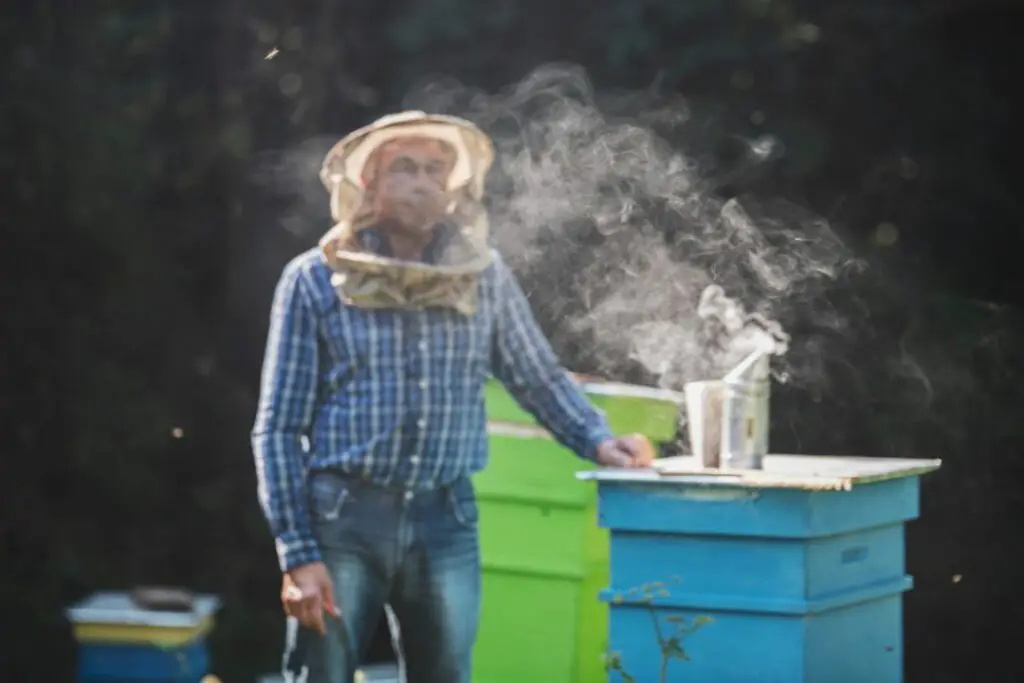
What Should You Do If You Get Stung?
Getting stung is almost a rite of passage for beekeepers, so let’s unpack what you should do when it happens.
- Remove Stinger: When a bee stings, it normally leaves behind a stinger embedded in the skin. The attached bee venom sac continues to pump venom into the wound briefly. Using a fingernail or the edge of a credit card, scrape (don’t pinch) the stinger to remove it and minimize the amount of venom released.
- Stay Calm & Move Away: After removing the stinger, move away from the hive calmly. Disturbing the hive by panicking can release more pheromones and attract additional defensive bees.
- Clean: Wash the area with soap and water to remove as much venom as possible and prevent secondary infection.
- Apply Ice: To reduce swelling and pain, apply a cold compress or ice pack to the affected area. Ensure you place a cloth between the ice and the skin to prevent frostbite.
- Watch for Reactions: Symptoms of a severe allergic reaction (anaphylaxis) include difficulty breathing, swelling of the throat and tongue, rapid pulse, and a drop in blood pressure. If any of these symptoms are observed, it’s crucial to seek emergency medical attention immediately and use an epinephrine auto-injector (like an EpiPen) if available.
- Aftercare: Applying a topical antihistamine cream can help reduce itching and swelling. Keep the area clean and avoid scratching to prevent secondary infection.
- Record and Learn: It’s helpful to note the circumstances leading up to a sting, especially for new beekeepers. Understanding what might have provoked the bees can lead to better practices in the future.
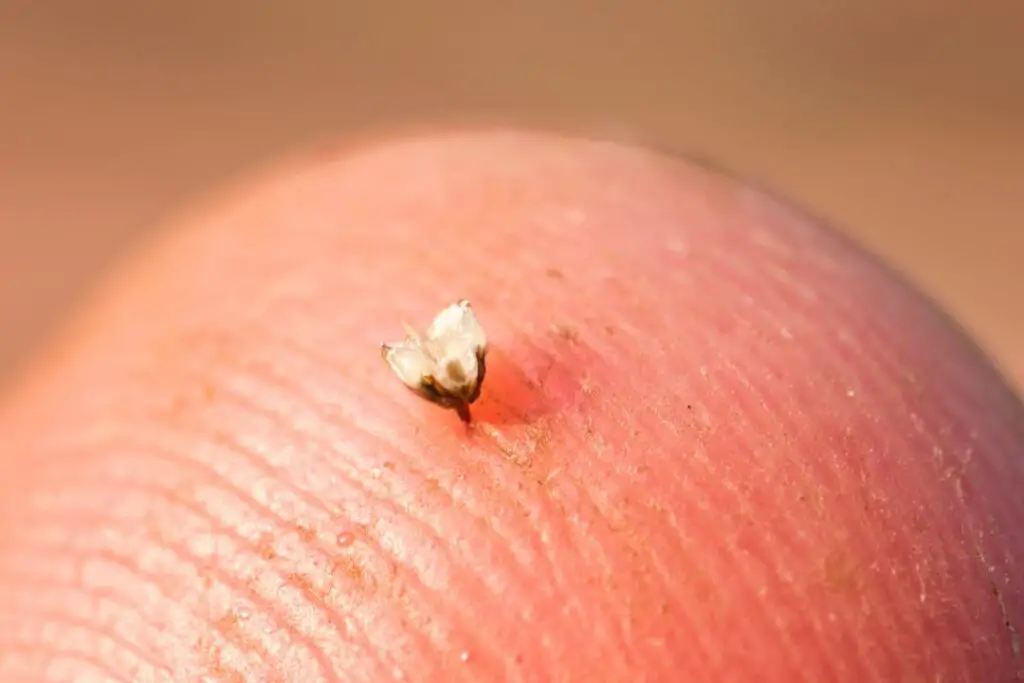
What About Beekeepers That Are Allergic To Bee Stings?
Although they tend to be few and far between for obvious reasons, a few experienced beekeepers are allergic to bees.
They will always carry an EpiPen (an auto-injector used to deliver a dose of epinephrine to treat severe allergic reactions) on them.
You can even consider venom immunotherapy, a treatment that is 98% effective at preventing allergic reactions from various insects, including bees.
In Conclusion
Now we know that understanding your bees will play a major factor. You can see how important taking the time to inspect and get to know your colonies is.
Sometimes, stings are unavoidable, but if you follow our simple steps above, you’ll go a long way towards sting-free beekeeping.
Don’t miss our other fascinating reads about the world of bees below, packed with amazing insights into these beautiful insects.

